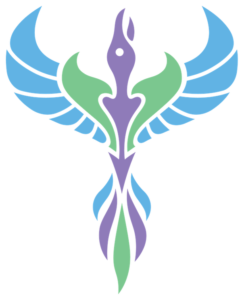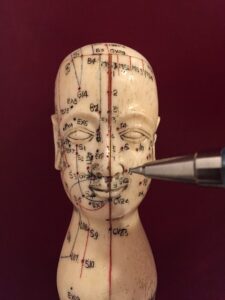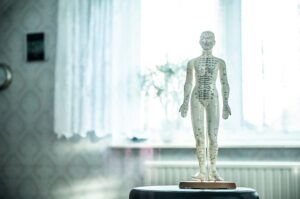The chiropractor Brooklyn Blog at Community Chiropractic & Acupuncture located in Park Slope, Brooklyn 11215, was started to let you know how we apply both Eastern and Western medical theory to establish a diagnosis and treatment plan designed specifically for each patient.
Furthermore, our goal is to help our patients enjoy an optimal quality of life with improved physical health, mental well-being, and a sense of spiritual tranquility.

Take a look at some of our health tips below in our chiropractor Brooklyn blog for information about improving your life.
Why more people are starting to ask about scalp acupuncture
Scalp acupuncture is forging its way into acceptance in the Western medical conscious. Most often used in the applications of post-stroke and brain surgery therapy, there is a growing body of clinical findings that point to the efficacy of scalp acupuncture in helping sufferers of:
- Paralysis
- MS
- Parkinson’s Disease
- Traumatic brain injuries
- Motor Neuron diseases
- RLS
- Phantom Limb Syndrome
- Aphasia
…and many more. But many people are still hesitant about scalp acupuncture, perhaps because of the dearth of practitioners in the United States. Let’s find out a little bit more about how it works.
Read MoreHow soon after birth can I receive a chiropractic adjustment?
We get this question a lot and our answer is always the same: as soon as you feel ready; as soon as you feel ready to leave the house, you could receive a chiropractic adjustment. The post-partum period is broken up into three phases, and will last as long as 9 months after birth; the majority of women will report at least one health problem during this period of time. What this tells us is that recovering from pregnancy and delivery is not something that happens over a night, or a week. It will take a concerted effort on your behalf to adjust to a body that is forever-changed, and a life that is irreversibly altered. For many new mothers, this can be an overwhelming time, fraught with nerves and misapprehension. It is our job to help balance your body and mind to help you effectively transition back into a new normal life with your baby.
Read MoreMorning sickness: out of the blue, pregnancy becomes very real
Morning sickness is different woman to woman- for some it is a severe nausea complete with vomiting while for others it may only be a background headache. But one thing is agreed- it is always uncomfortable and it is certainly not limited to the morning time. Your body is changing rapidly and morning sickness is a reflection of it trying to adapt; the first step to relieving the discomfort of morning sickness is therefore to relax. Getting pissed off at morning sickness has never helped anyone! If your morning sickness is moving past manageable, consider using acupuncture to relieve the symptoms and mitigate the discomfort.
Read More30+ years of trusted chiropractic and acupuncture services in Park Slope As one of Park Slope’s longest standing chiropractic and acupuncture practices, we are honored to continue our tradition of helping this community in our new office. This new, purpose-built space allows us to expand our services and staff to reach a greater portion of our great community. Between our senior staff members, we have over 100 years of collective…
Read MoreChiropractic for the breech presentation
Pregnancy chiropractic is well known for its role in mitigating the discomforts of pregnancy including back pain and sciatica. But fewer people are aware that chiropractic is one of the foremost techniques for resolving problems with fetal positioning in the penultimate period before delivery. By focusing on balancing joints of the lower back and alignment of the pelvis, we are able to help women with pregnancies who are suffering from the breech presentation. Let’s find out more about how this works:
Read MoreFertility acupuncture is an integral part of our practice
Having served the Park Slope community for over 30 years, we have been blessed to help many prospective mothers increase their chances of conception using acupuncture. Many couples come to us having tried seemingly everything else with no luck- the despair of struggling to conceive is a heart-rending scene and it motivates us to put all our services at their disposal. Read on to find out how acupuncture helps couples conceive.
Read MoreWhy is sciatica so prevalent in pregnancy?
There is this idea that pregnancy causes sciatica; there are even strange theories out there which purport that the baby somehow presses directly on the sciatic nerve. And while we can assure you that this is not the case, we do agree that there is a strong correlation between pregnancy and sciatica, particularly in the third trimester. The fact is, pregnancy breeds a perfect set of conditions for nerve impingement:
- Shifting center of gravity
- Added weight of the child
- Less activity
- Loose ligaments in the pelvis which breeds instability in the lower back
- Poor posture.
In this scenario, there is a good chance that your muscles are becoming strained and pulling your body out of alignment; this is when nerve impingement happens. When this impingement happens to occur to the sciatic nerve, sciatica symptoms develop, including:
- Burning, shooting pain in the lower back, usually isolated on one side
- Pain in the buttocks and lower extremities
- Numbness and tingling in the back and lower extremities
After a workout, don’t leave your body short-handed
When it comes to reaching peak performance, recovery is just as important as training. The true athlete has to strike the finest of balances between pushing their body and giving it the time it needs to recover. Due to the intensity of exercise, an effective rest can be the difference between getting back on the horse the next day or having to take a day off because you are too sore. So where does sports massage come in? Sports massage is about maximizing the efficiency of your rest periods. Let’s take a look at how this works.
Read MoreStress needs to be managed
Letting stress run unchecked in your life is a sure way to hurt yourself. While a certain level of stress is useful, many of us are operating at levels way above the threshold of manageability; stress is putting many of us on the road toward mental exhaustion and physical pain. Stress is linked to any number of physical ailments, and manifests itself in an entire spectrum of physical, emotional and cognitive symptoms. In the short term, these symptoms are enough to cause discomfort, but you may be able to compartmentalize them and move on with the task at hand. In the long run, however, stress can lead to mental health problems, cardiovascular diseases, digestive problems and musculoskeletal degeneration. In order to stop ourselves from reaching the end of this nasty road, we need to change tracks as early as possible and start taking a proactive approach to managing our stress.
Read MoreThe many benefits of acupuncture for seniors
Let’s face it: old age is uncomfortable; we are lucky if we just get away with aches and pains. As our bodies age, we begin to slow down and spinal degeneration sets in: conditions like spinal stenosis and arthritis can cause debilitating pain and cause us to feel less able. At Community Chiropractic & Acupuncture of Park Slope, we believe in taking a proactive approach to aging. That means identifying the factors that slow us down and facing them head on. Acupuncture is a tool that helps you do just that. Read on to find out how.
Read MoreMoreover, at Community Chiropractic & Acupuncture we are committed to providing individualized and compassionate patient care.
Dr. Karen Thomas founded the practice over 30 years ago with the express purpose of providing leading-edge healthcare to the Park Slope community.
As a result, the practice has grown considerably since then, and moved from its original location at Lincoln Place and Sixth Avenue to Eighth Avenue at Union Street, to its present location at 182 8th Ave. Brooklyn, NY 11215
We want you to know that we are prepared for you.
Furthermore, for the protection of our customers and our employees, we’ve followed the guidance of the W.H.O. and the I.C.C. and their directions to business owners.
Additionally, we have disinfected all surfaces and implemented recommended strategies to keep safe distances between all customers and employees to prevent any transmission.
In conclusion, our team is on top of the most current information available to businesses.
Please feel free to contact us with any questions about your health at 718-398-3100
We all speak English and...
Dr. Gabe is fluent in Spanish and Portuguese
Dr. Thomas speaks some Spanish but is not fluent
Yolanda, our office manager is fluent in Spanish
Steve, our front office assistant speaks some Chinese but is not fluent
Sofia, our medical biller is fluent in Russian










